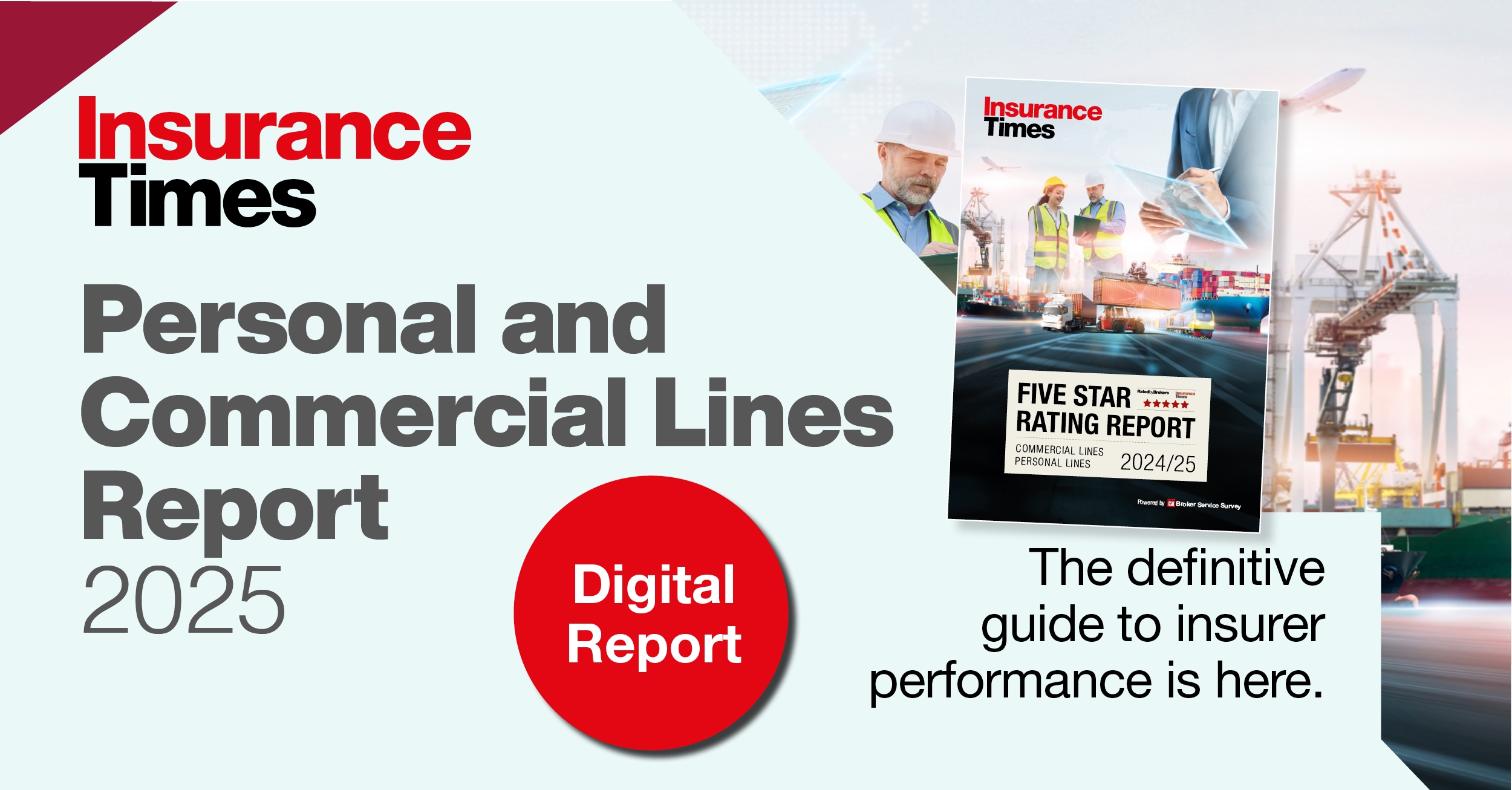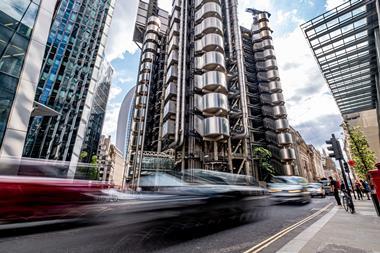Insurance DataLab reveals exclusive analysis of the five largest business lines in UK general insurance, detailing which products are currently the most profitable
It has been a tough couple of years for UK general insurance (UKGI), with the market falling to an aggregate underwriting loss in each of the last two years.

Even when insurers in this market have turned an underwriting profit, the results have not been particularly impressive – the best combined operating ratio (COR) across the last five years is the 97.3% reported for 2021/22.
This is equal to an underwriting profit margin of just 2.7% – not exactly cause for celebration.
Rising claims inflation, climate change and the ramifications of a global pandemic have all played their part in recent years and insurers have certainly been feeling the squeeze on their underwriting bottom line.
But how have the largest lines in UKGI been faring? Insurance DataLab’s latest analysis of Solvency and Financial Condition Reports (SFCRs) across the UK and Gibraltar, published exclusively by Insurance Times, has the answers.
Stalling motor profits
Motor insurance continues to be the biggest business line by gross written premium (GWP), accounting for 35% of the overall UKGI market.
Insurers wrote a total of £18.9bn in motor GWP last year – up almost 14% on the previous year as rising rates helped to drive up premium levels.
Indeed, motor premiums have increased dramatically in recent months. The latest Consumer Intelligence Car Insurance Price Index – published in August 2024 – revealed a 25.6% price increase over the 12 months to the end of June 2024.
Since October 2013, the price index revealed a motor premium increase of 120.9%.
But these rising rates have not fed through to underwriting profitability – for now at least – and motor underwriting results still make for uncomfortable reading, with motor insurers reporting an aggregate COR of 112.9% for 2023/24.
Not only is this a steep increase on the already unprofitable 111.1% COR reported the previous year, but it is also the highest ratio across all five years of this analysis.
Motor insurers have only managed to report an underwriting profit in two of the last five years, according to Insurance DataLab, with profitable results for 2020/21 (90.7%) and 2021/22 (97.4%) no doubt aided by the reduced driving miles surrounding the Covid-19 pandemic.
Much of this worsening performance has been driven by rising claims costs, with net claims incurred across the motor market rising by around 37% to £9.6bn for 2023/24, up from £7bn the previous year.
These figures also showcase a 68.6% increase in net claims incurred since 2020/21 and are 60% up on 2021/22, when the motor market last turned an underwriting profit.
As a result, the motor loss ratio now stands at 85%, meaning that for every £1 in premiums, some 85p is paid out in claims. This is comfortably the highest loss ratio across the entirety of this analysis and is some 6.8 percentage points higher than the 78.2% reported in 2022/23.
Motor insurers can, however, find some comfort from their expense base, with the aggregate expense ratio falling to 27.9% for 2023/24 – this is a five percentage point improvement on the 32.9% reported the previous year and the second lowest score across the five main UKGI business lines.
Crippling claims costs
Property insurance continues to be the second largest business line in UKGI, with GWP of £14.4bn meaning that this product accounts for 26% of the overall market.
Read: Top 10 brokers in UKGI revealed
Read: Complaints handling not up to scratch as complaints volumes soar
Explore more financial stories here, or discover more news analysis here
Like motor, property premiums have been steadily rising and this has contributed to a sustained growth in premiums, with GWP growing by 8.5% over the course of 2023/24.
But, similarly to the motor market, these rising premiums have not yet fed through to underwriting profits, with the 103.1% property COR reported for 2023/24 marking the fourth straight year of underwriting losses.
The overall picture has been improving though, with this latest result marking a 3.1 percentage point improvement on 2022/23 and the second best ratio of the last four years – only beaten by the 102.3% ratio achieved in 2021/22.
This does, however, still mean that the 99.4% ratio for 2019/20 – which only just creeps under the 100% breakeven point – is the only profitable result of the last five years.
Claims continue to be an issue for property insurers, with rising claims inflation and climate change leading to an increase in both the frequency and severity of claims.
Indeed, the latest UK storm season has seen the highest number of named storms since the 2015/16 season, with the Met Office’s UK Storm Centre deeming 11 storms severe enough to warrant that designation.
The aggregate property loss ratio stood at 60.5% for 2023/24 and while this is a 2.7 percentage point improvement on the previous year, it is still some 8.3 percentage points above the 52.2% reported in 2019/20.
An improving expense ratio has, however, slightly offset the impact of these rising claims costs, with the aggregate expense ratio falling 0.4 percentage points to 42.6% for 2023/24.
This is the fifth consecutive year for which the expense ratio has improved, with a total of 4.6 percentage points being knocked off the expense ratio during this reporting period.
Profiteering finger pointing
Despite these unfavourable results for the two largest UKGI business lines, insurers have still come under widespread pressure, facing accusations of profiteering due to continued rate increases – predominantly across the home and motor insurance markets – and a strong H1 2024 results season.
Speaking on a conference call following Aviva’s half-year results announcement on 14 August 2024, the insurer’s chief executive Amanda Blanc was quick to defend the industry, pointing to the high CORs that insurers continue to face.
She also referred to the “super competitive” nature of the motor market, which saw premiums fall dramatically as claims frequency dropped during the Covid-19 pandemic, before rising again as frequency returned to normal levels post-pandemic.
“What you saw in Covid, when frequency reduced, was that premiums came down significantly,” she said. “What you then saw – as frequency went back to more normal levels post-Covid – [was] that effectively premiums needed to go up.”
She said that this effect has also been exacerbated by the rising cost and frequency of claims in recent months, which has continued to hit insurer underwriting results.
“You’re seeing big numbers, theft claims increasing [and] combined with supply chain issues and labour costs, I genuinely don’t think you can accuse the industry of profiteering,” she added.
Areas of improvement
Other business lines have been more favourable for insurers, however, with the three other biggest lines in the UKGI market – general liability (12% market share), medical expenses (11%) and miscellaneous financial loss (6%) – all reporting a profitable COR, according to the latest set of SFCRs.

The most profitable of these is general liability insurance, with a 90.5% COR for 2023/24.
While this represents a two percentage point increase on 2022/23, it is still the second best general liability COR of the last five years, with the market reporting an underwriting profit in every year except 2020/21, when it fell into loss-making territory with a COR of 103.8%.
In contrast to other business lines, the general liability market has benefited from a falling loss ratio, with the 49.2% reported for 2023/24 indicating a 2.1 percentage point improvement on the previous year.
This also marks the third straight year of improvements, with some 13.9 percentage points being knocked off this line’s loss ratio since the 63.1% reported in 2020/21, which was affected by the Covid-19 pandemic.
While general liability insurers may have benefited from an improvement in the claims landscape, the miscellaneous financial loss market has benefited from an improving expense base.
Indeed, insurers in this market have reported an improving expense ratio across every year of this analysis, with the 34.7% achieved in 2023/24 marking a 4.4 percentage point improvement on the previous year.
This also represents an impressive 8.6 percentage point improvement on 2019/20, when the expense ratio stood at 43.3%.
The claims landscape has also been improving for miscellaneous financial loss insurers. While the aggregate loss ratio rose slightly to 55.9% for 2023/24 – compared to 55.6% for 2022/23 – this is still a comfortable improvement on previous years after the loss ratio peaked at 59.4% in 2021/22.
These dual improvements have helped miscellaneous financial loss insurers to report three consecutive years of improved underwriting results, as well as three straight years of underwriting profitability.
The market reported an aggregate COR of 90.6% for 2023/24, down from 93.7% in 2022/23 and a significant improvement on the loss-making 100.9% reported in 2020/21.
Pressure on profitability
The final profit-making business line across the five largest markets in UKGI is medical expenses, which reported a COR of 98.3% for 2023/24. This makes it the only business line in this analysis to report an underwriting profit in each of the last five years.
The market has continued to benefit from increased premium levels, with GWP rising by 5.0% to £6.2bn for 2023/24. This means that aggregate premium levels have now grown in each of the past three years, breaking through the £6bn barrier for the first time.
Meanwhile, claims have continued to rise and the 70.1% loss ratio reported for 2023/24 is some 5.2 percentage points higher than the 65.0% achieved in 2022/23. This is also the highest loss ratio medical expenses insurers have reported across this analysis, rising from a low of 59.7% in 2020/21.
This impact, however, has been partially offset by an improvement in the expense base, with the aggregate expense ratio improving by 0.7 percentage points over the course of 2023/24 to stand at 28.2% – the second-best expense ratio in this analysis behind motor insurance.
But, with softening rates now becoming prevalent across many business lines, the UKGI marketplace seems to be set for a continued period of pressure on underwriting profitability.
And despite some of the more favourable results being reported across H1 2024, it remains to be seen whether the market will return to underwriting profitability in 2024/25.

















































No comments yet